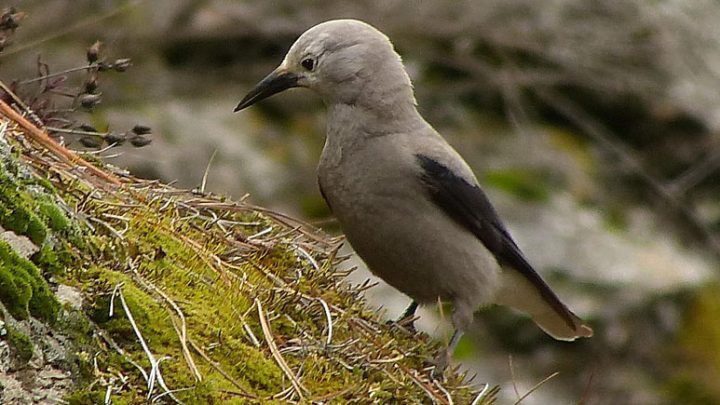Do birds store food for the winter?

Chickadees, nuthatches, some woodpeckers, jays, and crows store, or “cache,” food. Many other feeder birds—doves, sparrows, blackbirds, finches, etc.—do not store food at all. Those that do store food may hide hundreds, or even thousands, of seeds every year. Many species not only remember their hiding places, but what kind of tidbit they hid in each particular place. Some individuals are extra cautious and may re-hide seeds if they think another animal saw the hiding spot. Find out more in Project FeederWatch’s article What are they doing with all those seeds?.
Caching seeds not only helps a bird get through the colder months, but also serves as an important way that seeds can disperse and forests stay strong. Clark’s Nutcrackers may store 100,000 seeds a year. When they don’t return to their cache, that seed may germinate into a tree. Whitebark pines rely on nutcrackers to help disperse their seeds, and this mutalism has become increasingly important as disease threatens whitebark pine in many areas of the West. Read our story about this important relationship: Soul Mates: Nutcrackers, Whitebark Pine, and a Bond That Holds an Ecosystem Together.
Do you report your birds to Project FeederWatch? It can be really fun, sharpen your observation and identification skills, and give you a chance to provide valuable data for scientists. Project FeederWatch runs from November through early April. Check it out and sign up!

All About Birds
is a free resource
Available for everyone,
funded by donors like you
American Kestrel by Blair Dudeck / Macaulay Library
